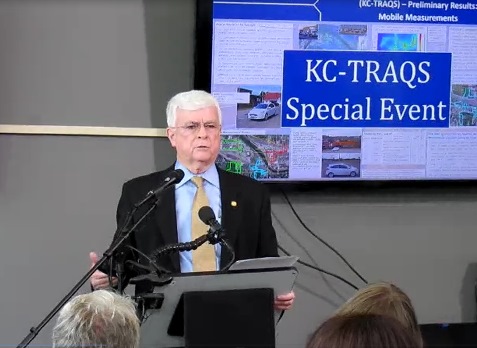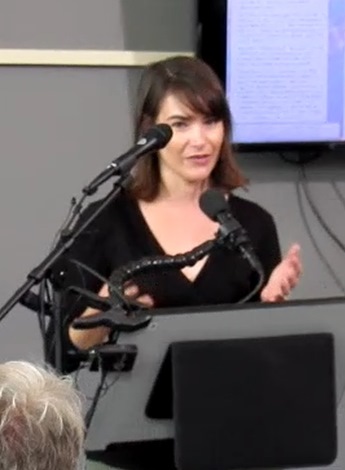
by Mary Rupert
The Environmental Protection Agency today gave a clean bill of health to air quality in the Argentine, Armourdale and Turner areas of Kansas City, Kansas.
In fall 2017, a study, the Kansas City Transportation Local-Scale Air Quality Study (KC-TRAQS), was launched to test the air quality in southern Kansas City, Kansas.
“Today we’re going to report to you good news,” said Jim Gulliford, EPA regional administrator, during an announcement on Wednesday morning at the community room at the South Patrol police station near South 21st and Metropolitan Avenue, Kansas City, Kansas. The South Patrol station is built on a remediated Superfund site and is close to railroad yards, highways and industries.
“The EPA’s six monitoring stations reported air quality that was well within EPA’s initial ambient air quality standards,” he said. Both EPA and the community worked together on the project, he added.
“We know that the Greater Kansas City air quality does meet the national EPA air quality standards,” Gulliford said. There are monitors through Greater Kansas City.
In this case, EPA was able to come into a local community, do additional testing, and found that the monitors are functioning and the results were accurate, he said.
“We hope this provides you with satisfaction as well,” he said.
The six monitors on the south side also were consistent with a monitoring station on the north side of Kansas City, Kansas, near 10th and Nebraska Avenue, one of the permanent monitoring stations in the area, he said.
He said the EPA teamed up with the community, and did the work they asked, tested the systems of providing additional monitoring data, and are satisfied with the results.
This KC-TRAQS testing project used a “citizen science” approach, with students at area schools participating in the air testing.
Students and teachers from Harmon High School, Rosedale Middle School, Turner High School and Wyandotte High School participated in air testing. Portable air monitors were “checked out,” he said, and used to test air quality in various locations.
The KC-TRAQS study tested for fine particle pollution and black carbon.

Unified Government Commissioner Angela Markley expressed appreciation to the students and teachers, as well as the EPA. She said it was an opportunity to be educated about air quality as well as to be reassured.
“I’m very happy with the results, obviously, I’m raising my family here, so I wanted to have positive results from the study,” she said.
The testing was prompted by individuals and organizations concerned about air quality.
Andy Williams, regional director of public affairs for BNSF railroad, said BNSF has done a number of things over the years to reduce air emissions. He said the air quality at the Argentine Yard is clean and meets all air quality standards at the federal, state and local levels.
Williams, a former reporter with the Kansas City Kansan, said that BNSF has cut its carbon emissions by 80 percent from 2008 to 2014 at the BNSF Railway Argentine Yard.
BNSF has worked with EPA, Williams said. It retrofitted locomotives, implemented idle control technology, and relocated intermodal operations involving truck traffic from Argentine to Gardner.








